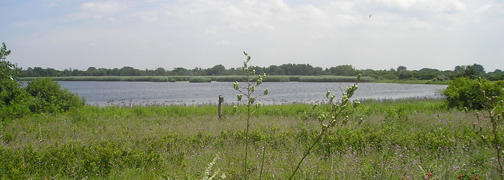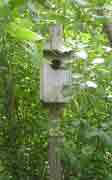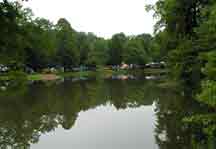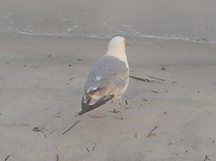|
WebQuest: How Can We Protect the Wetlands ? A WebQuest for middle school students (Science) Designed
by:
|
Introduction | Task | Process | Evaluation | Conclusion | Credits | |
|
Wetlands provide habitats for a large variety of plants, animals, fish, reptiles, birds, and microorganisms. They have complex, dynamic relationships to each other and to humans, in the food web and beyond. Wetlands help to purify and protect our groundwater and our drinking water. They also help to prevent the erosion of our shores. Wetlands help to protect our homes from floods and provide homes to various forms of wildlife. According to the Sierra Club, one acre of wetlands can store over 360,000 gallons of water if it is flooded by one foot of water. This source also reports that the National Weather Service reports that annual flooding costs up to $3.1 billion per year, and this damage tripled since 1950. Converting wetlands to farmland increases agricultural runoff by 200-400%. Natural wetlands remove pollutants and sediment from runoff, thus keeping waters clean. Destruction of wetlands also impacts the $45 billion fishing industry. (1) Unfortunately, the diversity of the natural animals and plants decrease as wetlands are destroyed every year. Human pollution, road contruction, and building developments have caused irreversible damage to these fragile environments. Take a trip to the Alley Pond Environmental Center or Jamaica Bay to see the wetlands environment firsthand! You won't be disappointed. If we have the opportunity this year, I would like to take my science classes there to see the diversity of birds and aquatic plants that live in the estuary/wetlands. You can hike along and explore 150 acres of woodlands, trails, streams, and ponds at Alley Pond.
Introduction | Task | Process | Evaluation | Conclusion | Credits |
The
Task
|
1 |
2 |
3 |
4 |
Score |
|
Students will show an understanding of why wetlands conservation is desirable. |
Students will not be able to describe the advantages of wetlands conservation. |
Students will describe the advantages of wetlands conservation in one to two sentences. |
Students will describe the advantages of wetlands conservation in three sentences. |
Students will describe the advantages of wetlands conservation in four or more sentences. |
|
Students will be able to describe various animals and plants that live in the wetlands and how to protect them. |
Many descriptions are incorrect and there is no apparent evidence of critical thinking. |
Some descriptions are incorrect and there is very little evidence critical thinking has occurred. At least two sentences have been written. |
Most descriptions are correct. Some critical thinking has occurred. At least three sentences have been written. |
The descriptions are correct. Critical thinking skills are evident. There are at least four well-written sentences. |
|
Students will interpret and synthesize information from nonprint media as demonstrated by being able to go through the website and to complete the worksheet. |
Students will not know how to interpret synthesize information from nonprint media. |
Students will interpret and synthesize some of the information from nonprint media. |
Students will interpret and synthesize most of the information from nonprint media. |
Students will interpret and synthesize all the information from nonprint media as demonstrated by being able to go through the website and to complete the worksheet. |
|
Participation |
No one took responsibility for the PowerPoint presentation. |
One member of the group leads the entire presentation. |
Both members of the group presented only part of the material. |
All students participated equally in the presentation and presented all the material. |
1 |
PowerPoint Presentation Clarity |
No organization, clarity, or opinions. |
Presentation was not well organized - thoughts and opinions are unclear. |
Presentation was somewhat clear. Some ideas and opinions need to be refined. |
Presentation was clear and to the point. Ideas and opinions are well prepared. |
|
Time Length of PowerPoint Presentation |
Between 0 and 4 minutes or more than 20 minutes. |
Between 3 and 6 minutes or 13 and 17 minutes |
Between 6 and 9 minutes or 11 and 13 minutes |
Between 9 and 11 minutes |
|
Students will be able to use PowerPoint to illustrate why the wetlands should be protected using examples and visual aids. |
No visual aides such as photographs and/or animations were used in the presentation. The presentation did not encourage wetlands conservation. |
The visual aids such as photographs and/or animations were briefly referred to in the presentation and needed more work. The presentation slightly encouraged wetlands conservation. |
Appropriate visual aides such as photographs and/or animations were used in the presentation. The presentation somewhat encouraged wetlands conservation. |
Organized and appropriate visual aides such as photographs and/or animations incorporated into the presentation. The presentation strongly encouraged wetlands conservation. |
|
Students will work cooperatively using technology as evidenced by completion of the activities. |
Students will not move along and will get stuck, constantly asking for help. They will not be able to work cooperatively in their assigned groups of two. |
Students will ask for occasional help before moving on to the next task. They will have trouble sharing the computer terminal. |
Students will seldom ask for occasional help before moving on to the next task. They will have very little trouble sharing the computer terminal. |
Students will move from step to step on their own and at their own pace. Students will work cooperatively using technology as evidenced by completion of the activities. |
Introduction | Task | Process | Evaluation | Conclusion | Credits |
Curriculum & Standards | Teacher Page
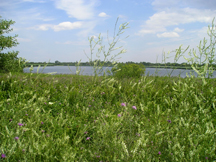
Introduction | Task | Process | Evaluation | Conclusion | Credits |
Curriculum & Standards | Teacher Page
Introduction | Task | Process | Evaluation | Conclusion | Credits |
Curriculum & Standards | Teacher Page
Curriculum & Standards
(see lesson plan)
2) National Science Education Standards, http://www.nap.edu/readingroom/books/nses/3.html#ts
Last updated on July 22, 2007 . Based on a template from The WebQuest Page
